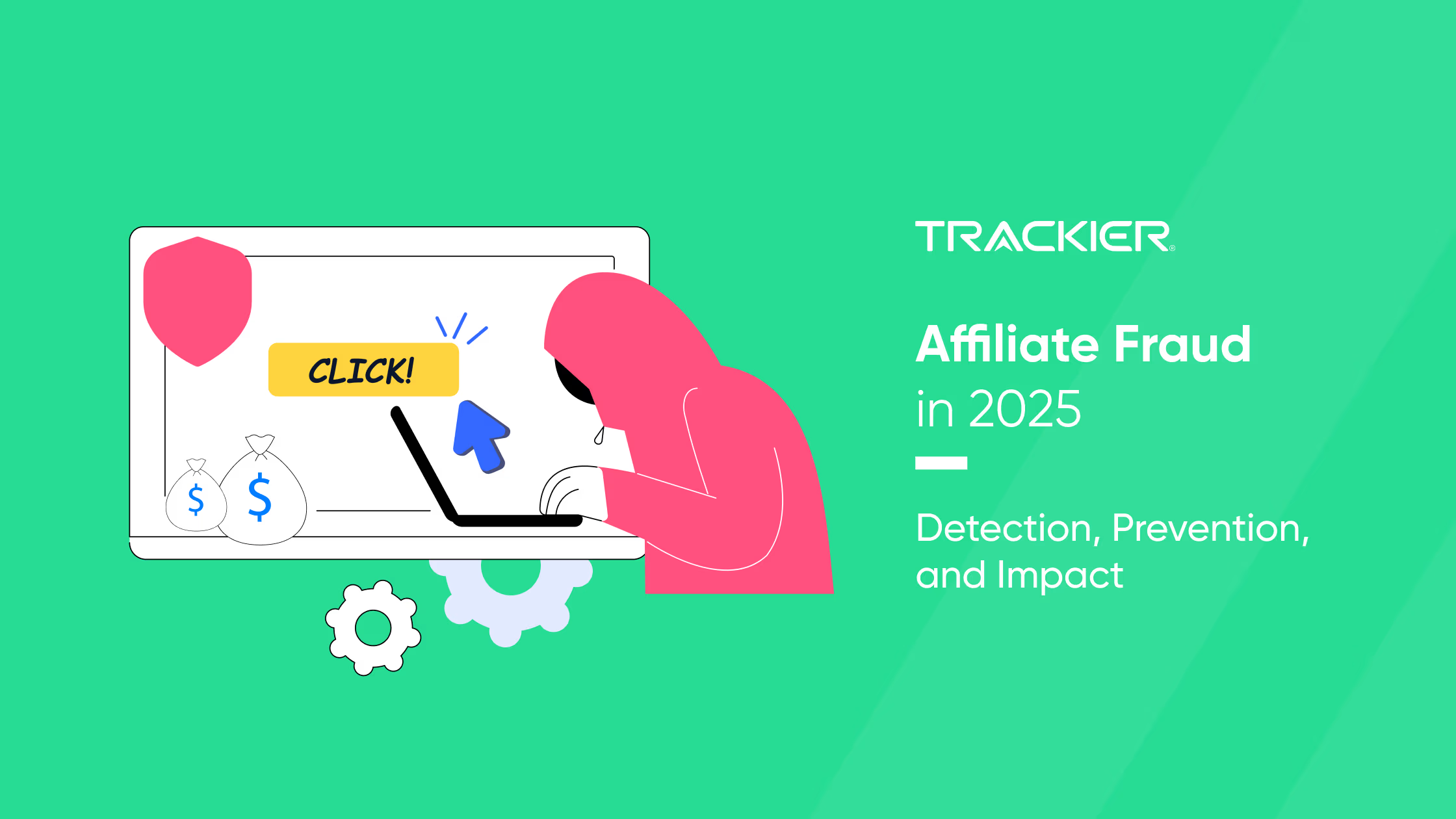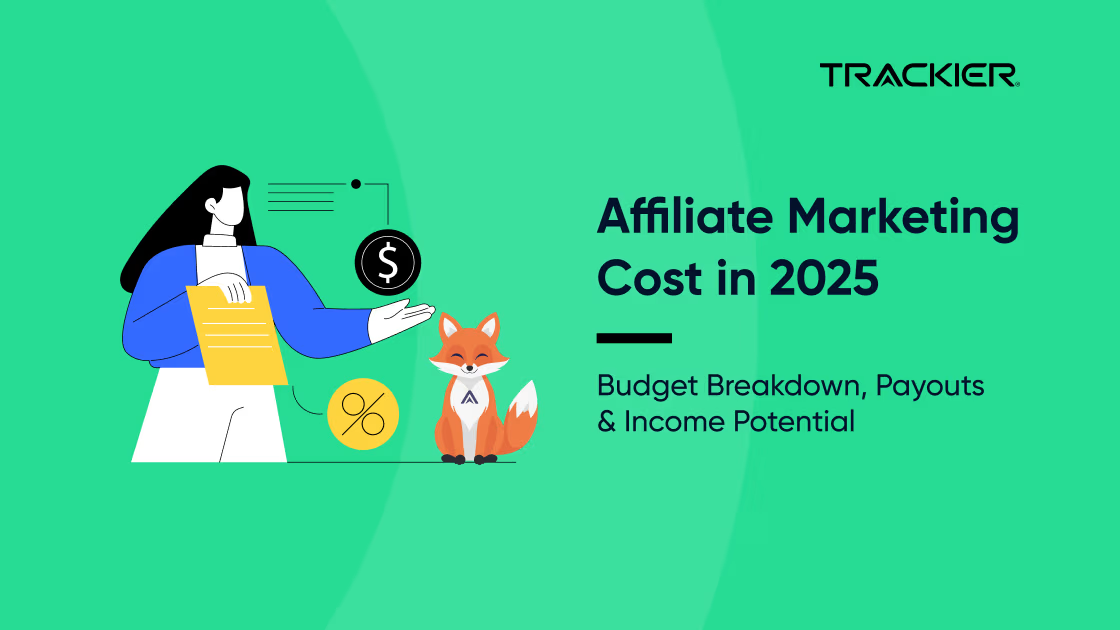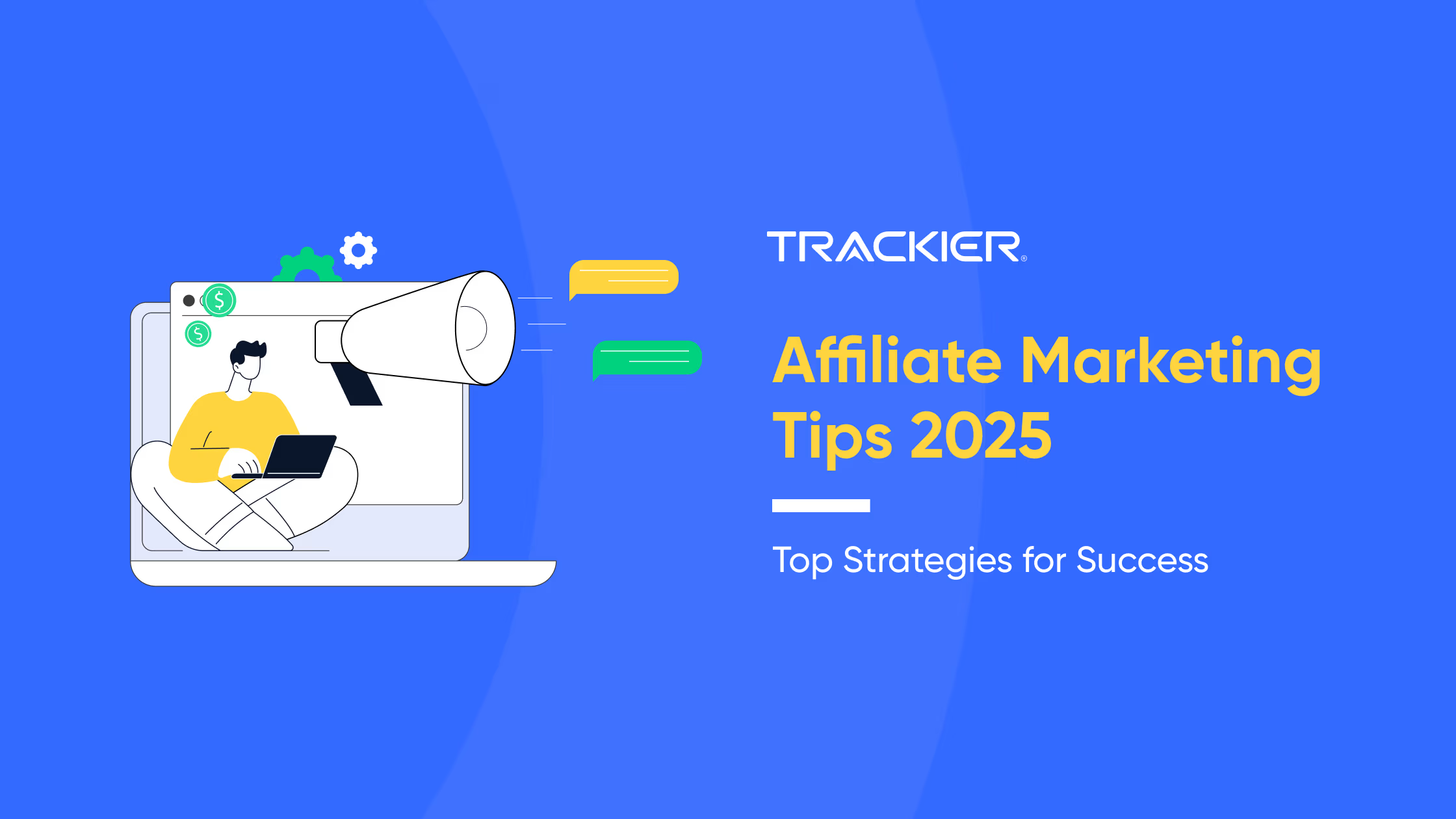Think about spending thousands, possibly millions, on an affiliate campaign, just to notice a significant portion of that spending is now gone. In fact, in 2025, 22% of all digital ad spend will be projected to be lost due to fraud, amounting to billions lost to brands every year.
That’s not just speculation; just think of it this way, your fraud affiliates could be taking roughly a quarter of all your commissions on your affiliate program.
Affiliate fraud will skew data, destroy ROI, and ruin trust in any partner program. However, you don’t have to deal with fraud. Affiliate fraudsters can be detected and blocked in real time with Trackier’s advanced features, stopping fake clicks and inflated conversions before they affect your results.
In this blog, you’ll discover what affiliate fraud is, the tactics of fraudsters, and how Trackier helps you to detect and prevent fraud in real time. In fact, what you learn today could save your next campaign from being a wasted spend.
What is Affiliate Fraud?
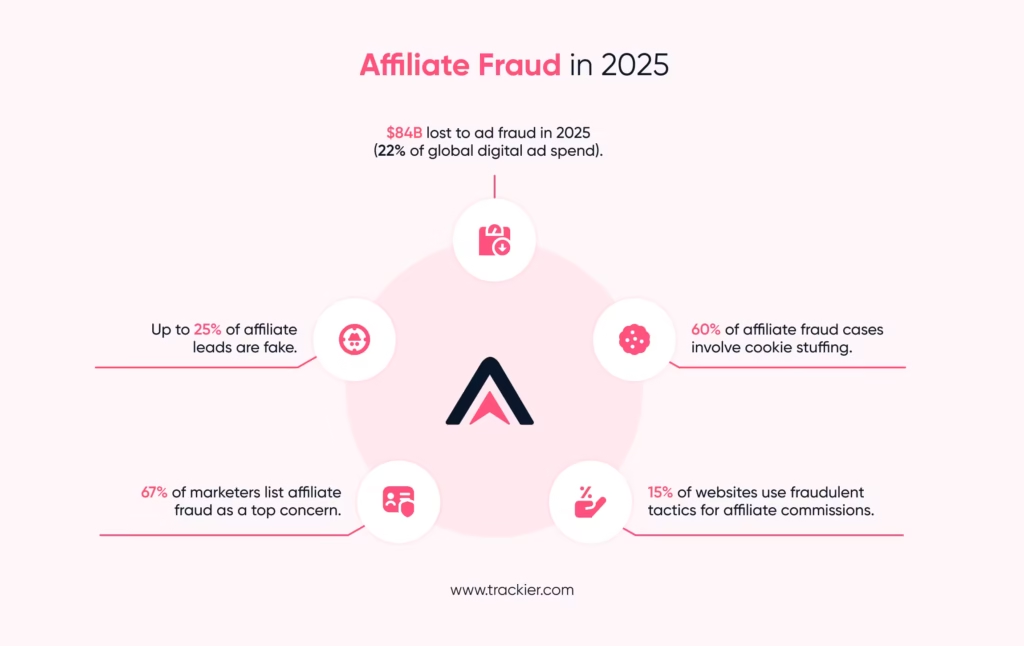
Affiliate fraud is any fraudulent activity that affiliates (or third parties) engage in to fraudulently generate commissions. It can include cookie stuffing, last-click hijacking, false leads, click bots, ad cloaking, and more.
Fraudsters want to (illegally) insert themselves into your tracking funnel so that they can receive credit for clicks or conversions they didn’t generate. They can attack your site with fake traffic to create fake sales.
As per Search Engine Land, today’s fraudsters use geo-fenced advertising, cloaked sites, and smart redirects to differentiate themselves from advertisers.
They may even bid on your branded search terms (brand bidding) or install malicious adware in an end user’s device to secretly generate fake conversions. In most cases, these schemes are very, if not impossible, to see without specialized tools.
Fraud in affiliate marketing distorts every part of your affiliate program, producing bogus measurement models, stealing commissions, and changing analytics.
Why Should Businesses Care?
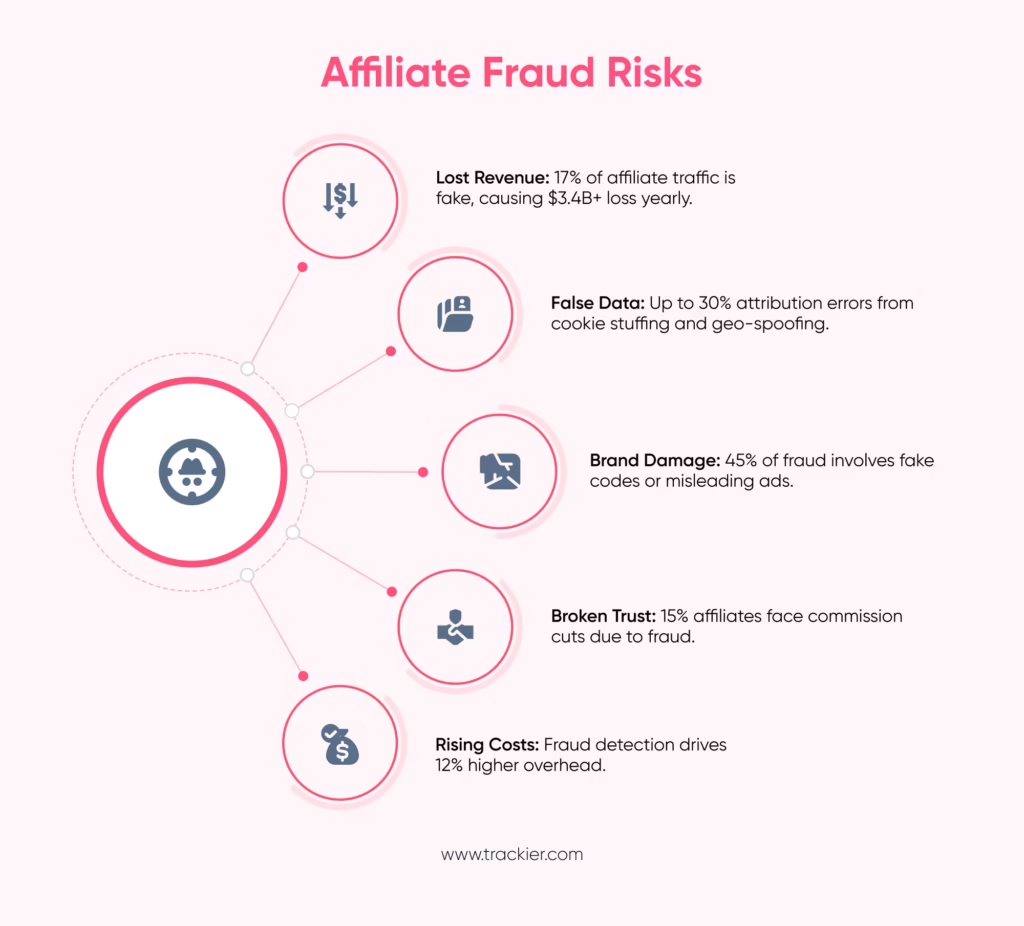
Affiliate fraud is not simply a couple of extra payouts; it is a multi-layered risk that harms revenue, data reliability, and trust in a brand. If it is not stopped, fraudulent affiliate behavior can destroy your actual ROI and cause you to lose good business partners.
This is exactly why affiliate fraud prevention has become a critical investment for brands that want to scale affiliate programs safely. Here are the core impacts:
1. Lost revenue and wasted spend on ads
With every illegitimate click and/or sale, you are essentially paying a commission on nothing. In fact, around 17% of affiliate traffic can actually be fraudulent, costing around $3.4 billion per year.
Affiliate fraudsters are often the cause, draining your budget while appearing like legitimate affiliates.
According to SocialSnowball, “lost commission represents the second-largest hit to the bottom line. If a brand does not identify fraud, they will continue to pay for fabricated activity out of pocket, which results in a huge revenue loss.”
This means brands are simply overspending on promotions and giving money to bad partners rather than the good partners.
2. Distorted performance data
Fraud alters your reporting. Fake clicks or conversions can give the false impression that a bad channel is performing well, leading to poor decisions: budgets are allocated to “high-performing” affiliates that are actually creating fraudulent traffic, while legitimate affiliates are left underfunded.
Cookie stuffing and ad hijacking, for example, can make it seem as if legitimate affiliates are not meeting their potential, because affiliate fraudsters are taking credit for the sale. Ultimately, this leads to unreliable reporting; you’re making marketing decisions based on fake metrics.
3. Reputation harm to the brand
Shady affiliates often use misleading advertisements, coupon codes, or low-quality microsites. Customers may click on an illegitimate link or coupon, believing it was from the brand for an official sale or referral.
They have a bad experience, and many unhappy customers may give negative feedback about your brand when the issue was with the shady affiliate.
This is problematic because it will discourage potential customers from using your brand. “If an ad of theirs was somewhat misleading, they don’t even realize it was a third party, and they left negative feedback, so now you’re losing potential clients because of a third party.”
Even if you had nothing to do with that bad traffic, it damages the brand’s image, like you or your brand did something wrong. “If you’re thinking, ‘I will do this promo for my affiliate, they did this, ’ and see that you were legit, and the commission is being taken, this would put a hole in whatever trust the customer had.”
In a worst-case scenario, scams from affiliates (i.e., fake codes for discounts) may draw negative attention legally for misleading consumers from your legitimate brand.
4. Stressed affiliate relationships
Honest affiliates lose out when fraud occurs. If budgets get drained by fake bots or affiliates, you may reduce overall commission or tighten payment terms, which affects the affiliates that are trustworthy.
In addition, honest publishers may become skeptical or feel burned if they observe unanticipated declines in revenue (which can be attributed to fraud).
Over time, affiliate program fraud threatens the viability of the ecosystem as good affiliates leave the partners or influencer networks may not recommend you because they suspect fraud in the program.
In essence, fraudsters undermine both your marketing ROI and the motivation to stay in your partner network.
5. Higher operational expenses
Investigating and remediating fraud is costly. Your team will eventually spend hours involved in investigations, audits, dispute resolutions, and partner management.
Eliminating fraud through the affiliate channel often requires upfront investment in more comprehensive fraud prevention software, hiring or training personnel with expertise to manage investigations, and developing a strict onboarding process for new partners.
All of this increases operational costs and expenses. This means, ultimately, unmitigated fraud in the affiliate channel becomes an unaccounted tax on your marketing, losing revenue directly through commission losses and indirectly with increased overhead costs.
Types of Affiliate Fraud
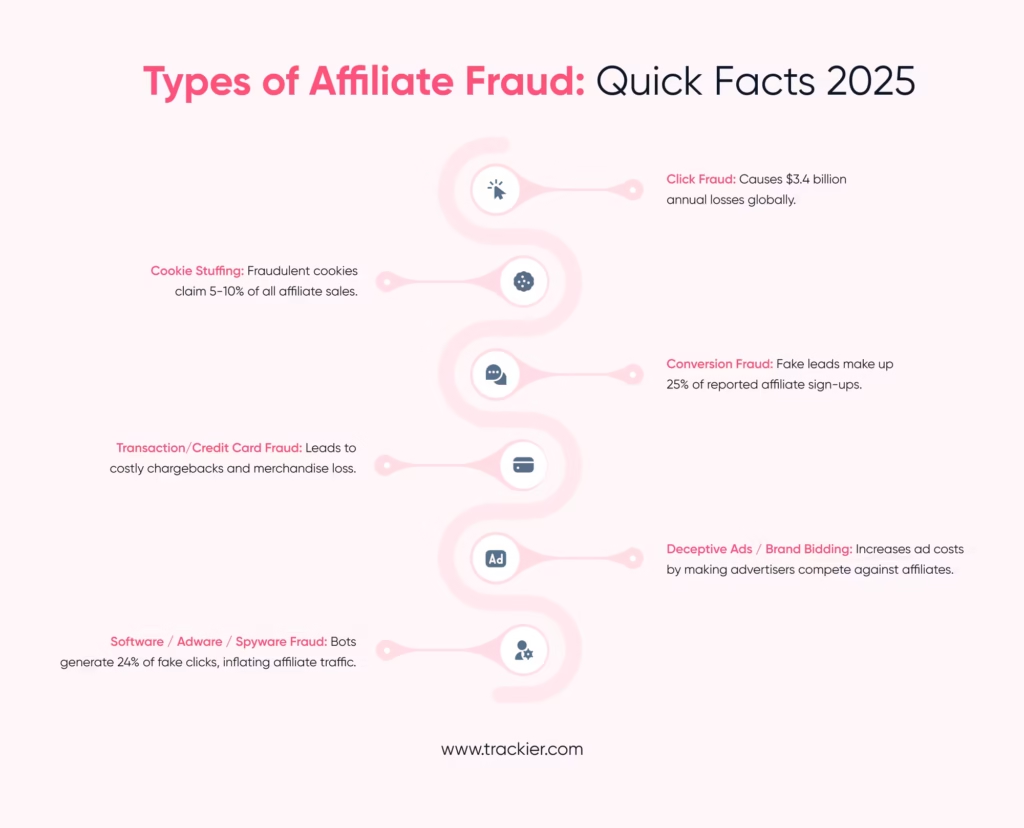
There are many types of affiliate fraud. A few of the common types of fraud that businesses should be on the lookout for are:
1. Click Fraud
Fake affiliates (or bots) generate fake clicks on their affiliate links with no intention of converting, but simply to generate commissions. These affiliate fraudsters manipulate metrics to appear productive and drain ad spend.
This type of fraud, referred to as “click spam”, can happen in PPC campaigns and sometimes inside mobile applications.
Each bogus click generates more traffic to the affiliate, making them look like a productive affiliate.
At checkout, they would then generate a dummy conversion for each click. The end result is that your ad costs increase (since, usually, you pay per click), and unpaid click fraud leads are counted.
2. Cookie Stuffing
In this type of fraud, the fraudster “stuffs” your visitor’s browser with affiliate cookies for multiple offers or multiple advertisers in the background.
For example, the fraudster may place invisible tracking codes on a third-party site or script them to drop after a user leaves your page.
If, at a later time, that same user buys something from the advertiser (even if they had gone through the advertiser from a different affiliate or from a direct route), the fraudster’s cookie would claim the sale.
In this scenario, there are multiple affiliates (the legitimate one and the fraudster) now trying to generate commissions on the same sale. According to ProxyEmpire, cookie stuffing is “one of the most controversial and historical cases of defrauding merchants”.
3. Conversion Fraud (Fake Leads)
A fraudster might provide fake leads, sign-ups, or sales where the person or business in fact never existed. For example, they could script auto form-fillers or, with stolen personal data, create a dummy account or two.
Then your system will somehow attribute that lead or sale to that particular affiliate. Hostinger, for instance, has mentioned instances of fake leads: scammers will create bogus sign-ups or conversions, and collect the commission, while you are paying for traffic attributed to someone who was never a potential customer.
All of these examples are conversion fraud, attempting to collect commissions for transactions that did not contribute to real business.
With a robust affiliate fraud prevention strategy, fake leads and dummy conversions can be filtered out before they drain budgets.
4. Transaction/Credit Card Fraud
Some affiliates take advantage of stolen credit cards or payment accounts to produce fake orders via their own links.
In this case, an affiliate uses the stolen payment information to create a fake purchase. Your system sees this as a legitimate sale, credits the affiliate, and pays a commission on it. Later, the legitimate cardholder disputes the charges, and you have a chargeback.
Basically, affiliates are paid for charges they have no right to. This is bad; not only did you pay for a fake sale, but now you have also lost merchandise and incurred chargeback fees.
5. Deceptive Advertising / Brand Bidding
In some cases, affiliates may bid on your trademarked keywords in paid search results or may create ads that “look” like your brand and direct traffic through a third-party affiliate link.
The consumers think they are clicking on your ad; however, the affiliate receives a commission on the back end.
This practice is called brand bidding or ad hijacking. This drives your paid search costs up (you are essentially competing against your own affiliate) and converts organic customers into commissions for other scammers.
6. Software / Adware / Spyware Fraud
Fraud can also be embedded into software. Malicious browser extensions, toolbars, or adware can hijack affiliate tracking behind the scenes.
For example, a pop-up “offer” can drop an affiliate cookie at the time a user browses, regardless of whether the user ever clicked on an affiliate link.
As ProxyEmpire has pointed out, these commission payments often result from “malicious adware in the form of popups and other types of advertising fraud,” which results in inflated traffic that is worthless.
Spyware on a user’s device could also be capable of injecting affiliate cookies on real purchases. This fraud is problematic because clicks are coming from “real” devices.
How Can Trackier Help in Affiliate Fraud Detection?
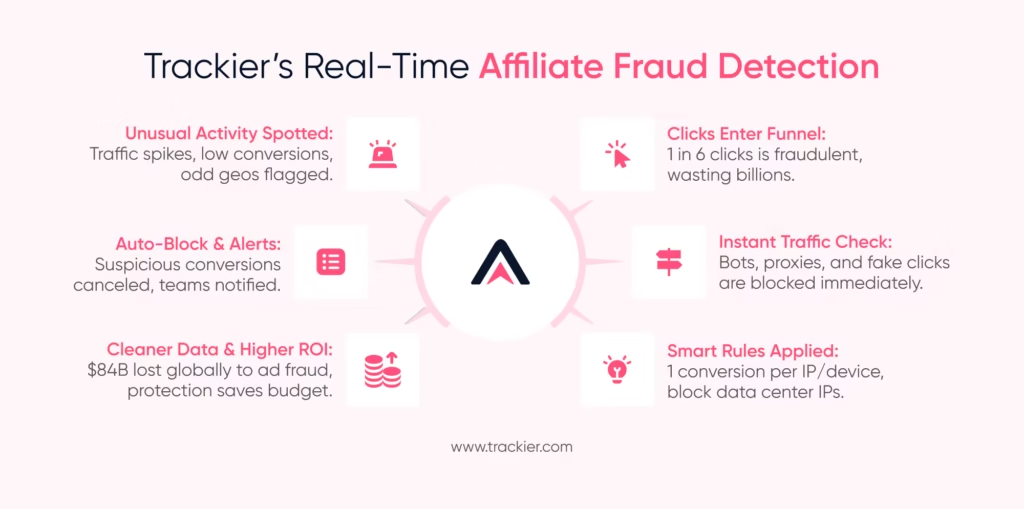
It is almost impossible to manually manage affiliate fraud at scale. Trackier evaluates clicks and conversions in real time, blocking affiliate fraudsters by applying smart rules, IP restrictions, and automated alerts.
We evaluate clicks and conversions in real time. So, you have the option to set custom fraud rules per campaign: create a list of known proxy or data center IPs to block; enforce one unique conversion per device, and set a threshold for time to confirm, to flag bots.
Some of the features for fraud prevention that Trackier offers are:
- Real-Time Traffic Validation: Trackier analyzes each and every click and conversion in real time. With filters, Trackier can efficiently validate traffic and detect invalid traffic (bots, scrapers, proxies) before you even begin your evaluation. Therefore, you will find that fake clicks will not appear in your metrics.
- Reporting Trends in Fraud: Trackier’s dashboard allows you to measure and monitor your fraud patterns: top suspicious publishers, suspicious countries, and campaigns. Visibility helps you “reveal patterns and sources of fraudulent activity,” showing necessary updates for your program.
- Custom Rules: You can create rules that are relevant, such as filtering by country or device. Trackier has rules that can block traffic coming from AWS/GCP data centers, known proxy networks, empty/invalid device IDs, and only one conversion per IP. For example, the “Unique IP Conversion” rule only allows for 1 sale to occur per IP, nullifying any conversion attack.
- API Integrations: Trackier allows you to plug in external fraud databases (for example, IPQS or BOTMAN) for even more coverage against fraud. This expands your layers of defense.
- Automation and alerts: If fraud is flagged, Trackier can automatically cancel suspicious conversions or notify your team to investigate. The automated action prevents fraudulent traffic from confirming and entering your reports without detection.
Future of Affiliate Fraud Prevention
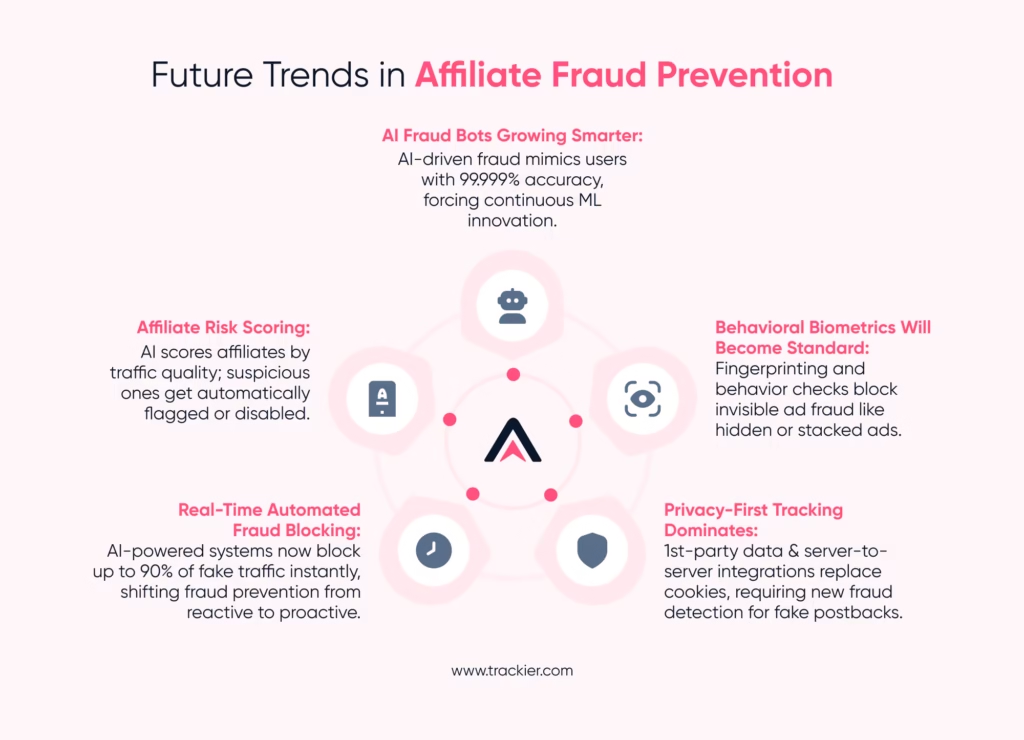
As affiliate programs advance, fraudsters will as well, and so will our layers of protection. Industry experts suggest that the next wave of affiliate fraud will be based on extremely subtle tactics and emerging technology.
It will be important to have solutions already using AI and machine learning to help keep pace with the evolution of fraud.
Fraud detection will constantly rely on the analysis of patterns (for example, strange geo-switching behavior or cloaking behavior based on time, inconsistent click-to-conversion ratios, etc.). These are patterns that are difficult for humans to detect.
1. Ad Placement Fraud
Another new potential threat is ad placement fraud. Insiders are already stating that the hidden iframe (1×1 pixel ads) and stacked ads will be the “biggest challenge” in the industry at the moment.
In these situations, affiliates can produce “conversions” that have never been served to the user, which are extremely difficult to detect.
Because these have just emerged as a problem, solutions in the next couple of years will involve more aggressive crawling of site patterns (as if a user were viewing it) or viewability checks for invisible ads.
Fraud detection vendors may adopt grabbing a device fingerprint or behavioral biometrics to verify the “user” is real.
2. Privacy and Regulation
Future methods will be influenced by privacy and regulation. With new privacy laws (GDPR, CCPA) and the removal of cookies, tracking is becoming harder yet more transparent.
This also means that affiliate fraud prevention will need to adapt, leveraging server-to-server tracking and first-party data to eliminate loopholes fraudsters exploit.
This signals a shift for affiliate platforms to utilize first-party data and move to server-to-server integrations for their tracking.
This might reduce certain cookie-based trafficking scams, but it could just as easily open up new loopholes (creating fake postbacks as an example).
3. Stricter Affiliate Onboarding and Monitoring
On the promotion side, stricter onboarding and monitoring of affiliates will occur. Smart platforms will increasingly implement scoring of affiliate risk and disable accounts that exhibit “higher conversion rates than others,” a red flag.
Several podcast interviews with fraud experts make it clear that businesses need to be more proactive: carefully onboard new partners, get proof of the source of traffic to reduce risk, and keep a close audit of rapid increases in performance.
Conclusion
Affiliate fraud in 2025 is more than just another problem; it’s a billion-dollar problem that reduces your ad spend, distorts performance measurement, and undermines the foundations of trust.
By prioritizing affiliate fraud prevention, brands can protect their ROI, strengthen affiliate relationships, and protect long-term growth.
The methods used by fraudsters have become more sophisticated than in the past, and protecting against them is no longer simply a best practice, but an absolute necessity for the sake of your business.
Here are ways to stay ahead of the affiliate fraudsters:
- Utilize advanced fraud detection tools – Monitor clicks, conversions, and more in real-time.
- Establish additional strict affiliate onboarding – Test your affiliates before they join your program.
- Continually analyze traffic quality – Protect against fake leads, bot traffic, and spikes in traffic.
- Automate fraud rules – Eliminate patterns with high-risk characteristics in real-time without intervention on your end.
- Support true affiliates – Consider building tighter partnerships with affiliates, driving new growth prospects through true engagement.
With Trackier’s fraud prevention, you don’t go by reports; you access detection, protection, and recommendations to protect your revenue and grow with confidence as a result.
Don’t let fraudsters take your ROI. Book a free demo with Trackier today and take proactive measures while growing it smarter.
FAQs
1. How to stop affiliate fraud?
The combination of advanced affiliate fraud detection tools, rigorous onboarding of affiliates, and continuous monitoring can effectively eliminate affiliate fraud. Using Trackier, a brand can enable the real-time detection of affiliate fraud by using advanced attribution, smart rules, and automated alerts to ensure that only legitimate affiliates drive genuine conversions and quality traffic. The most effective solution is investing in a strong affiliate fraud prevention framework that works across clicks, leads, and conversions.
2. How does click fraud affect affiliate marketing?
Click fraud distorts metrics due to fraudulent clicks and skews performance data. For an affiliate program manager, this means poor tactics, poor ROI, and overall, trust in affiliates will, no doubt, suffer. Fraudsters use fake clicks from click farms and/or bots to achieve their goals, but the best affiliate fraud prevention tools will help block these specific attribution frauds immediately.
3. How to prevent click fraud in affiliate marketing?
To prevent click fraud, brands should invest in affiliate fraud prevention software, implement IP block lists, and monitor for any unusual click-to-conversion ratios. Again, Trackier can help detect affiliate fraud by identifying suspicious click patterns in real time. This will reduce wasted spend, protect the overall campaign budget, and preserve the affiliate relationship that is built upon actual performance.
4. What is affiliate fraud management?
Affiliate fraud management is the process, the tools, and the strategies used to detect, prevent, and mitigate affiliate marketing fraud. Affiliate fraud management includes onboarding affiliates prior to acceptance, real-time monitoring of the affiliate’s activity, fraud detection, and automated payout holds prior to disbursement to the affiliate. Trackier simplifies the fraud management processes with dashboards, alerts, and customizable rules for proactive affiliate fraud prevention.
5. What is affiliate hijacking?
Affiliate hijacking happens when dishonest agencies insert their tracking code into genuine affiliate traffic, robbing commissions from real affiliates. This kind of affiliate program fraud causes damage to trust and ROI. Businesses can use affiliate fraud detection systems with monitoring to help identify and prevent affiliate fraud from occurring.
6. Is affiliate marketing legit?
Yes, affiliate marketing is a legitimate and effective growth channel being used by leading brands worldwide. But like any other industry, there is a possibility of affiliate fraud and scams in affiliate marketing. With appropriate affiliate fraud prevention platforms, reporting transparency, and due diligence on partners, a business can run affiliate programs that are safe, scalable, and profitable.
